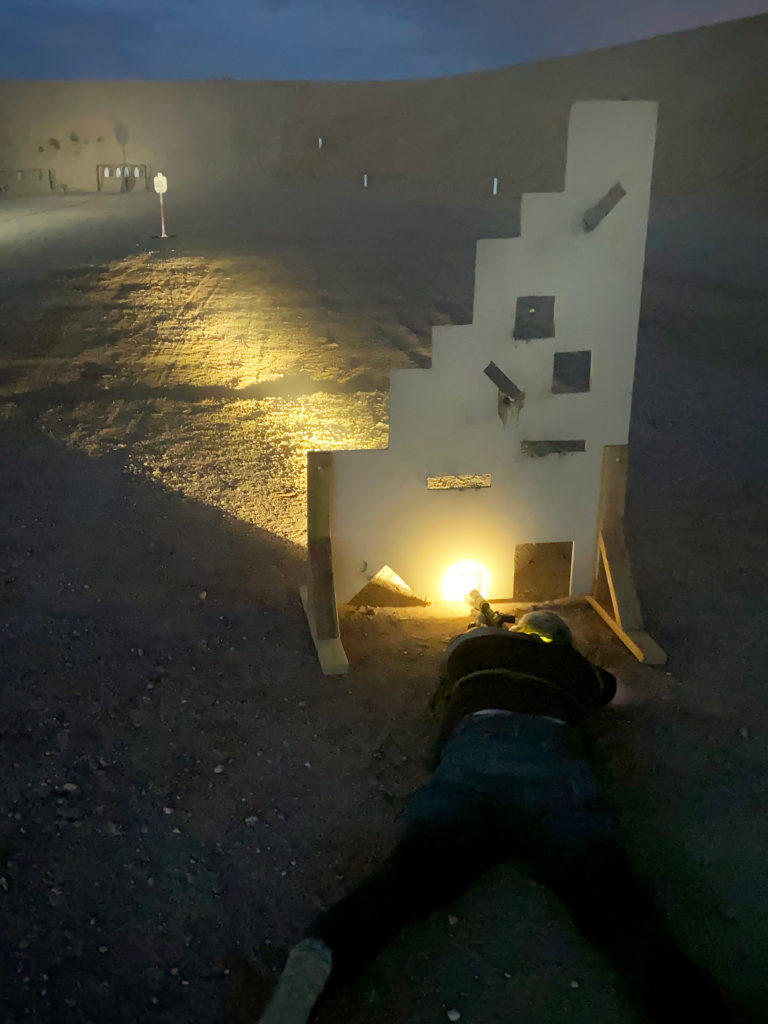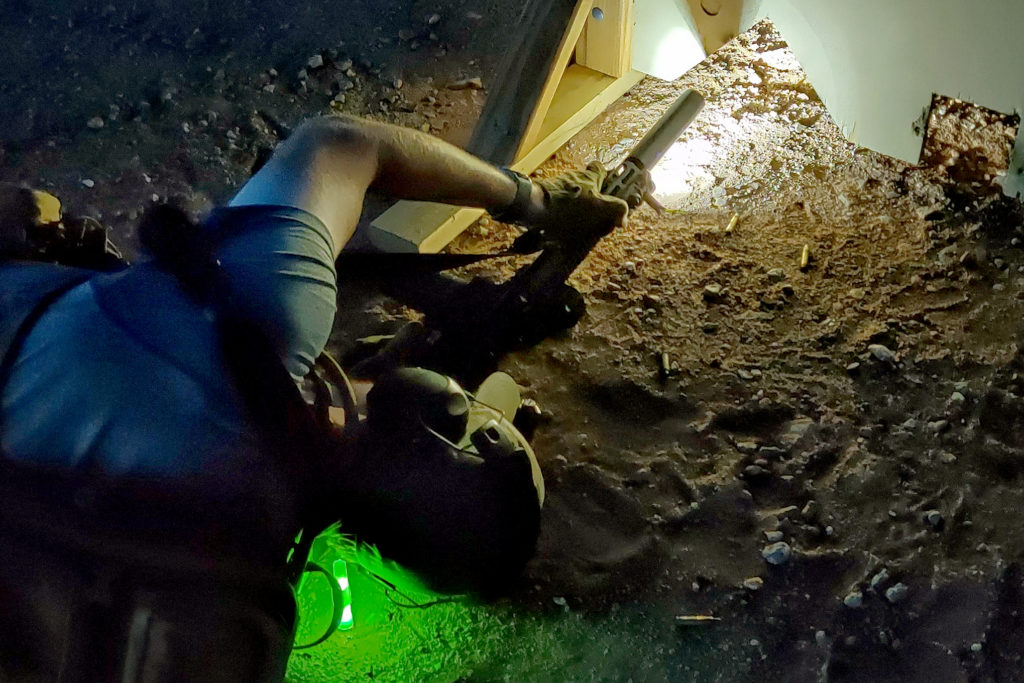RECOIL OFFGRID Survival Red Rock 360 Tactical: Training in the Dark
According to the National Archive of Criminal Justice Data, 9 p.m. is the peak hour for violent crime. Despite this fact, many of us train almost exclusively during the day. Does that make sense to you? No? Good. If you wish to be truly prepared, your training must be realistic, and this means you need to learn how to defend yourself effectively around the clock.
With this in mind, I recently took a day-and-night carbine class from Red Rock 360 Tactical in Marana, Arizona. The class is typically split into five-hour sessions on two days, but our class was condensed into a single day. Head instructor Frank Munoz, a USMC scout sniper (retired) and active paramedic, began the afternoon portion of the class by checking students’ fundamentals, including our ability to compensate for optical offset and maintain accuracy from 5 to 100 yards. We also practiced the classic Mozambique drill — two rounds to the chest and one to the head — as well as target transitions and reloads. None of this felt especially difficult, but it’d get more challenging as the daylight faded and flashlights became the only light source.

The final daylight drill and the first nighttime drill involved the same obstacle: a VTAC barricade. For those not familiar, it looks like an oversized plywood Tetris block covered in holes and slots. We were tasked with hitting a target through each opening as quickly as possible — this meant standing, kneeling, going prone, and contorting into some uncomfortable stances. It also meant acquiring a sight picture at awkward angles, and being aware of muzzle placements to avoid shooting new holes in the plywood. During the day, we stayed back from the barrier to maximize its cover. After nightfall, we pressed muzzles through each opening before activating our flashlights, since turning them on too soon produced blinding backsplash. Muzzle flash and dust clouds also obscured visibility, but those of us with suppressors had less trouble.
Working around the barricade became exponentially more difficult as we now had to get the muzzle, sight picture, and flashlight beam through each opening. This emphasizes the value of a compact light mounted close to the barrel. More importantly, several students noticed that their lights weren’t as reliable or effective as they had assumed. A few were too weak or diffuse to clearly illuminate targets beyond 50 yards, and others needed new batteries almost immediately. My own began to flicker under recoil; twisting and stretching the tail cap spring corrected the problem. Illuminated reticles had to be adjusted to avoid washout under dynamic lighting conditions. Without testing our carbines on a dark range, none of these issues would’ve been revealed.

The remainder of the nighttime session focused on movement. We practiced entering rooms silently, pressing doors to check if they were open. We used our lights to scan in short bursts, moving constantly and taking care not to telegraph our paths with the beam. Shooting with a flashlight is simple enough, but the real challenges come from the tasks between light activations — moving to cover, reloading, and clearing malfunctions. This Red Rock 360 class provided valuable lessons about the differences in day and night shooting, and gave me an appetite to train more after the sun sets.
For more information on future classes, follow @redrock360 on Instagram or email redrock3sixty@gmail.com.
 STAY SAFE: Download a Free copy of the OFFGRID Outbreak Issue
STAY SAFE: Download a Free copy of the OFFGRID Outbreak Issue
No Comments